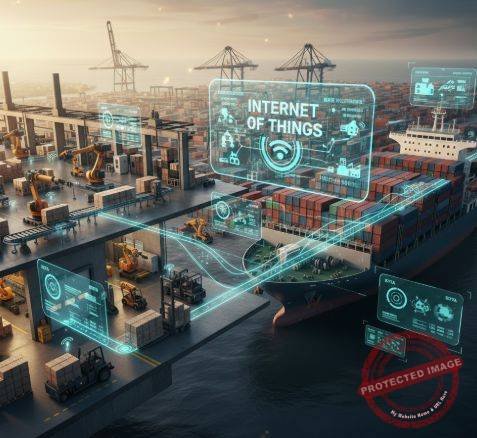Turning Data into Foresight—How Predictive Intelligence Is Helping Businesses Anticipate, Adapt, and Thrive in Volatile Markets.
The Age of Uncertainty in Global Supply Chains
Supply chains today operate in an environment of unprecedented volatility. From pandemics and geopolitical tensions to climate events and cyberattacks, disruptions have become the new normal rather than the exception.
In this context, resilience—the ability to anticipate, absorb, and recover from disruption—has become the defining characteristic of successful supply chains.
And at the heart of this resilience lies a new strategic capability: predictive analytics. Using machine learning and real-time data, predictive supply chains can forecast potential problems before they occur and respond with precision and agility.
From Reactive to Predictive: A New Supply Chain Paradigm
Traditional supply chain models were largely reactive—responding to delays, shortages, and fluctuations after they occurred. Predictive analytics flips this model by providing foresight instead of hindsight.
By analyzing data from sensors, suppliers, logistics partners, and market signals, predictive systems identify trends, anomalies, and early warning indicators.
This intelligence allows supply chain managers to answer critical questions in advance:
-
Which supplier risks are emerging?
-
How will extreme weather or political unrest affect delivery routes?
-
What is the projected impact of raw material price volatility?
In essence, predictive analytics transforms uncertainty into actionable insight—empowering leaders to act before disruption strikes.
The Data That Drives Prediction
The predictive power of modern supply chains comes from an ecosystem of interconnected data sources:
-
IoT Sensors: Provide real-time updates on equipment status, shipment location, and environmental conditions.
-
ERP and CRM Systems: Offer insights into order volumes, production cycles, and customer demand.
-
External Feeds: Include weather data, port congestion reports, economic indicators, and even social sentiment.
Machine learning models process this information to produce probabilistic forecasts, giving organizations a dynamic view of risk and performance across the entire supply network.
AI and Machine Learning in Risk Anticipation
Artificial Intelligence takes predictive analytics to the next level. By training on historical data and continuously learning from new inputs, AI algorithms can model complex relationships and detect emerging risks that human analysts might miss.
For example:
-
Predictive Maintenance: AI forecasts when machinery will fail, preventing costly downtime.
-
Demand Sensing: Neural networks adjust production and logistics based on shifting consumer behavior.
-
Supplier Risk Scoring: Algorithms rank suppliers by financial stability, lead time consistency, and geopolitical exposure.
Through AI-driven foresight, organizations can simulate disruptions, test mitigation strategies, and dynamically reconfigure their supply chains in real time.
Scenario Planning and Digital Twins
Predictive analytics becomes even more powerful when combined with digital twin technology—a virtual replica of the entire supply chain ecosystem.
These digital twins simulate multiple “what-if” scenarios, such as factory shutdowns, port closures, or raw material shortages. By visualizing outcomes, decision-makers can assess potential impacts and test contingency plans before implementing them.
The result is data-validated agility, where strategic responses are modeled and refined long before real-world disruptions occur.
Building Resilience Through Visibility and Collaboration
Resilience depends not just on data, but on visibility and collaboration. Predictive platforms provide a unified, cloud-based dashboard that integrates data from suppliers, carriers, and customers—creating a single source of truth for all stakeholders.
This transparency fosters trust and coordination, allowing partners to act collectively when risks are detected. In a world of interconnected supply networks, shared intelligence equals shared resilience.
Challenges in Predictive Supply Chain Adoption
While predictive analytics offers immense potential, organizations face key challenges:
-
Data Quality: Incomplete or inaccurate data can skew predictions.
-
Integration Complexity: Legacy systems must be modernized for real-time analytics.
-
Cultural Resistance: Some organizations remain anchored in reactive mindsets.
-
Ethical Data Use: Ensuring compliance with privacy laws and ethical AI principles.
To overcome these barriers, companies are investing in data governance, cloud integration, and workforce upskilling to create digitally fluent supply chain teams.
Closing Thoughts and Looking Forward
Resilience is no longer optional—it’s a competitive advantage. Predictive analytics enables organizations to navigate uncertainty with confidence, turning disruption into opportunity.
As supply chains evolve, predictive intelligence will merge with automation, blockchain, and AI to create self-healing, self-optimizing ecosystems that adapt automatically to change.
The next generation of supply chain leaders won’t just manage risk—they’ll anticipate it.
The era of proactive resilience has begun.
References
-
“Building Predictive Supply Chains with AI” – MIT Sloan Management Review
https://sloanreview.mit.edu/article/building-predictive-supply-chains-with-ai -
“Digital Twins and Scenario Planning in Logistics” – Deloitte Insights
https://www.deloitte.com/insights/digital-twins-scenario-planning-in-logistics -
“The Role of Predictive Analytics in Supply Chain Resilience” – McKinsey & Company
https://www.mckinsey.com/capabilities/operations/our-insights/predictive-analytics-in-supply-chain-resilience -
“How AI Is Reinventing Risk Management in Supply Chains” – World Economic Forum
https://www.weforum.org/agenda/2024/09/how-ai-is-reinventing-risk-management-in-supply-chains -
“Creating Data-Driven Resilience” – Harvard Business Review
https://hbr.org/2024/08/creating-data-driven-resilience
Author: Serge Boudreaux – AI Hardware Technologies, Montreal, Quebec
Co-Editor: Peter Jonathan Wilcheck – Miami, Florida
Post Disclaimer
The information provided in our posts or blogs are for educational and informative purposes only. We do not guarantee the accuracy, completeness or suitability of the information. We do not provide financial or investment advice. Readers should always seek professional advice before making any financial or investment decisions based on the information provided in our content. We will not be held responsible for any losses, damages or consequences that may arise from relying on the information provided in our content.



